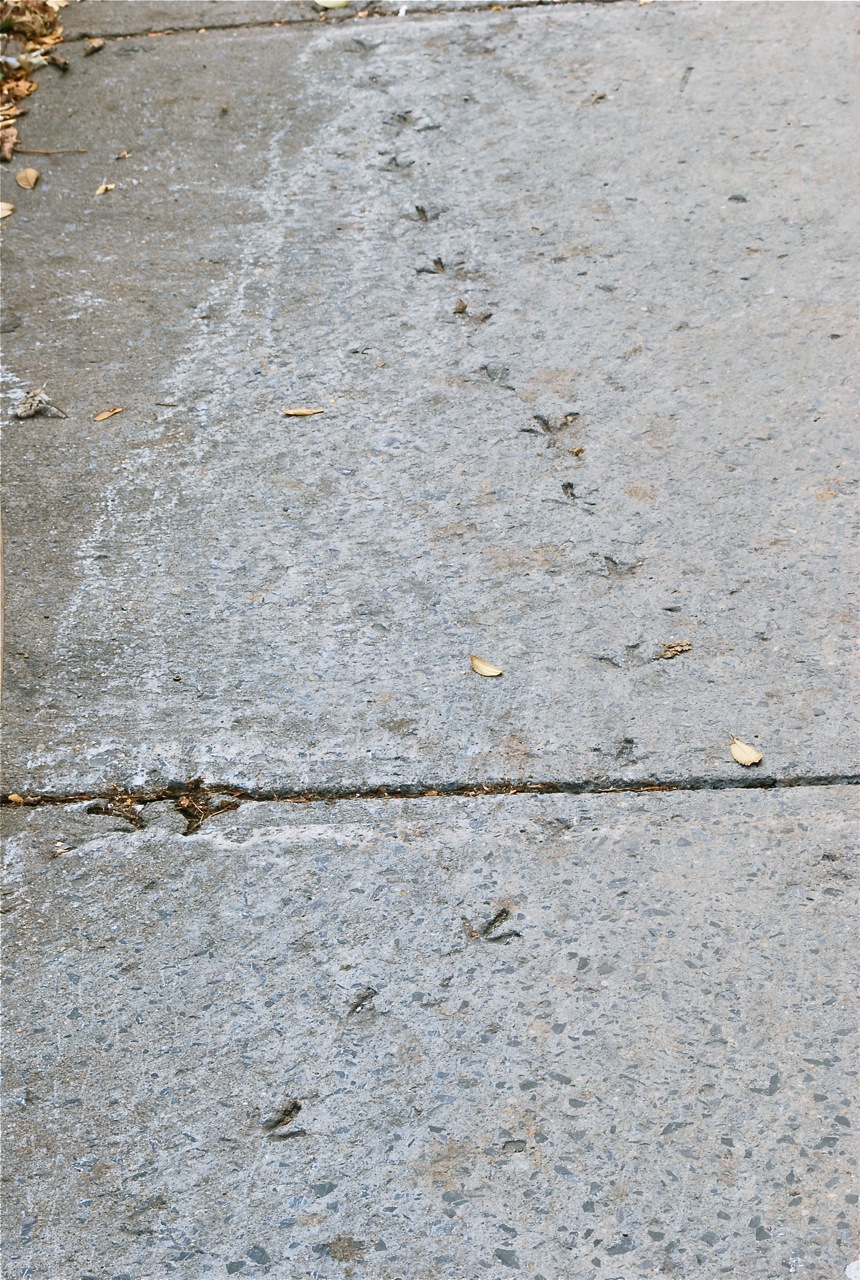“City pigeons are the product of domestication – but exist somewhere between tame and wild. Their traces in wet cement remind us that human and non-human animals share the city together. The sidewalk was once a meeting place – not just a passageway. Pigeons still use it that way.” – Pigeon Tracks blog
Jennifer Roberts is an Art History grad student who studies the timeless interaction between pigeons and wet cement. She tracks pigeon tracks – and dog and cat and squirrel tracks too – all as part of an exploration of how animals use urban space.
Roberts has created a map cataloging those immortalized pigeon prints around Concordia’s downtown campus and put up exploratory posters at each site (although most have been removed by city workers). Then, to literally highlight the traces left by pigeons in our urban landscape, she filled their foot prints with green gelatin.
If their tracks are any indication, plenty of pigeons are unruffled by a stroll through wet cement, while others alight for only the briefest of moments (see the solo set of prints beside the sidewalk crack in the photo above). I have seen quite a few mangled pigeon toes around town, but have yet to see any with their feet encased in concrete concrete blocks…
The next issue of Spacing magazine which will be release on December 9th is all about urban animals.

